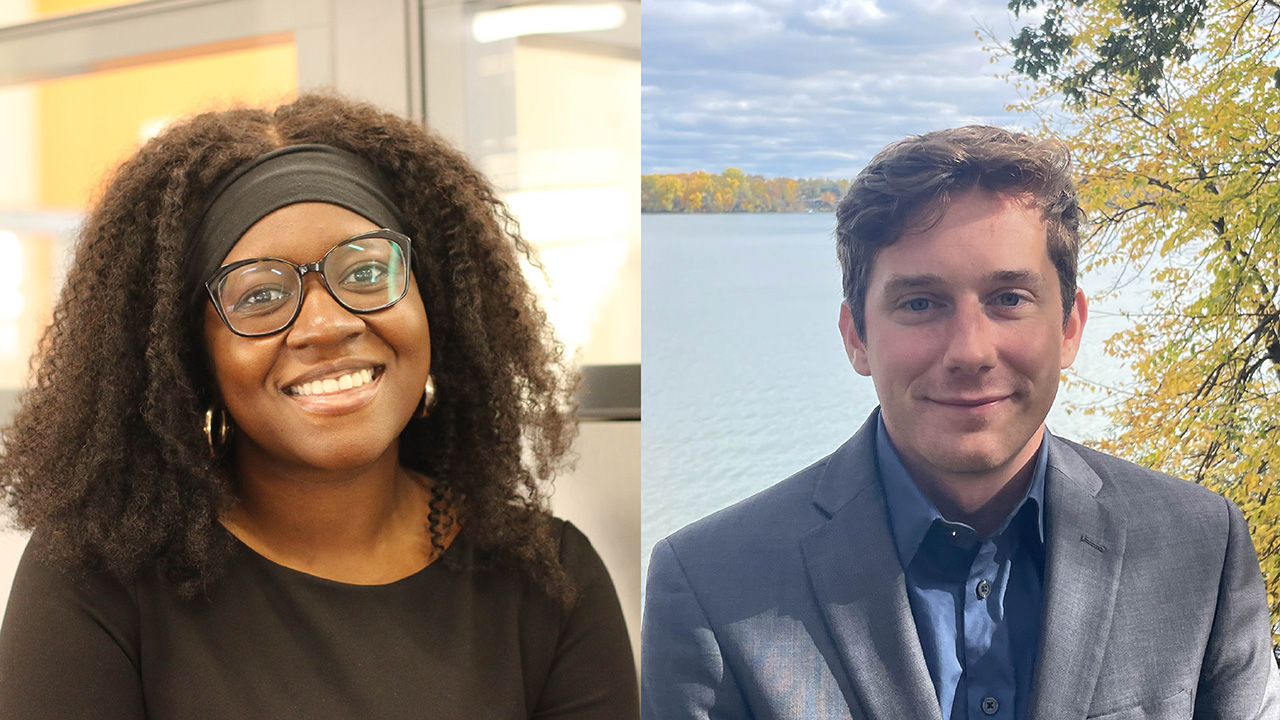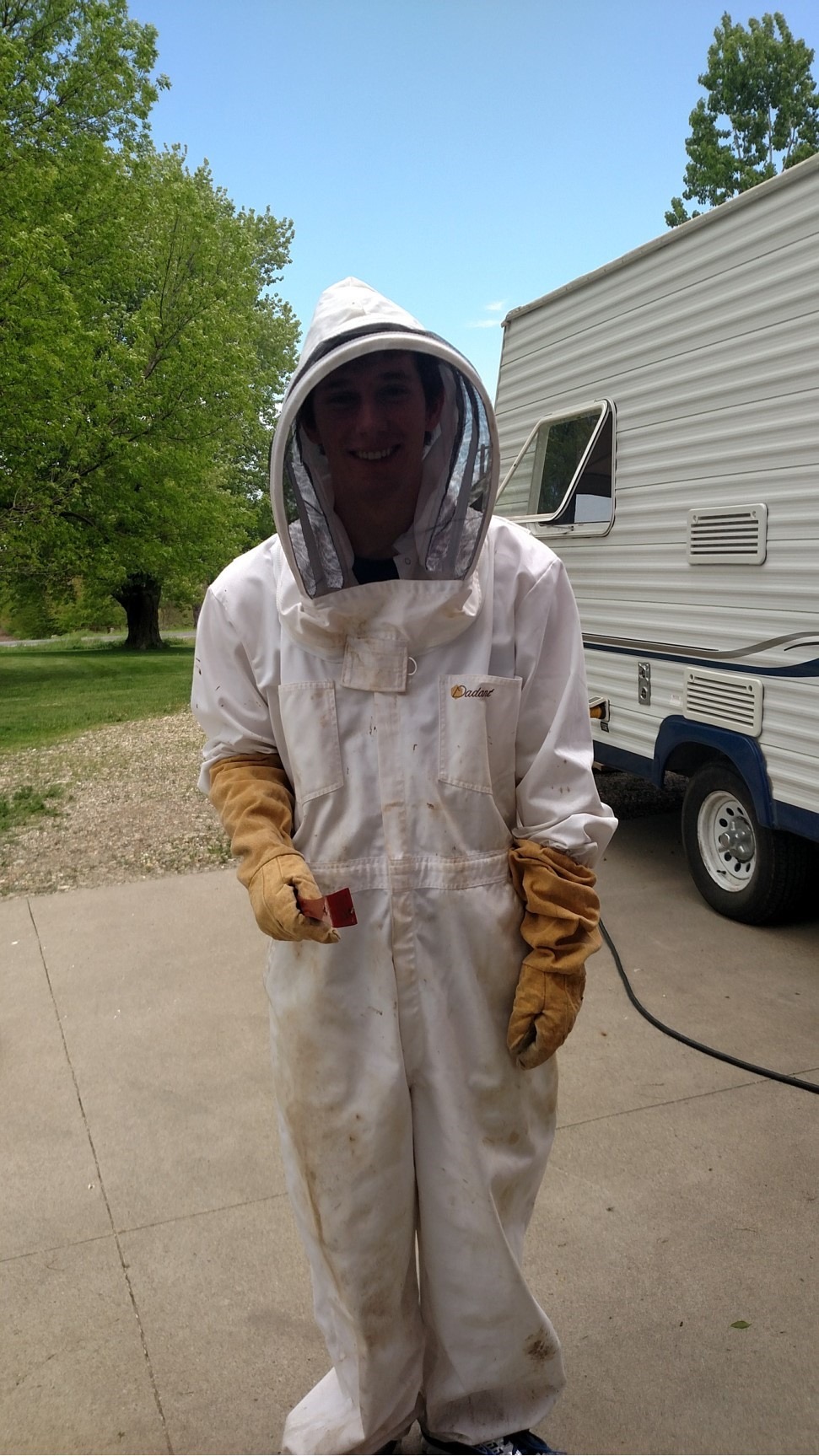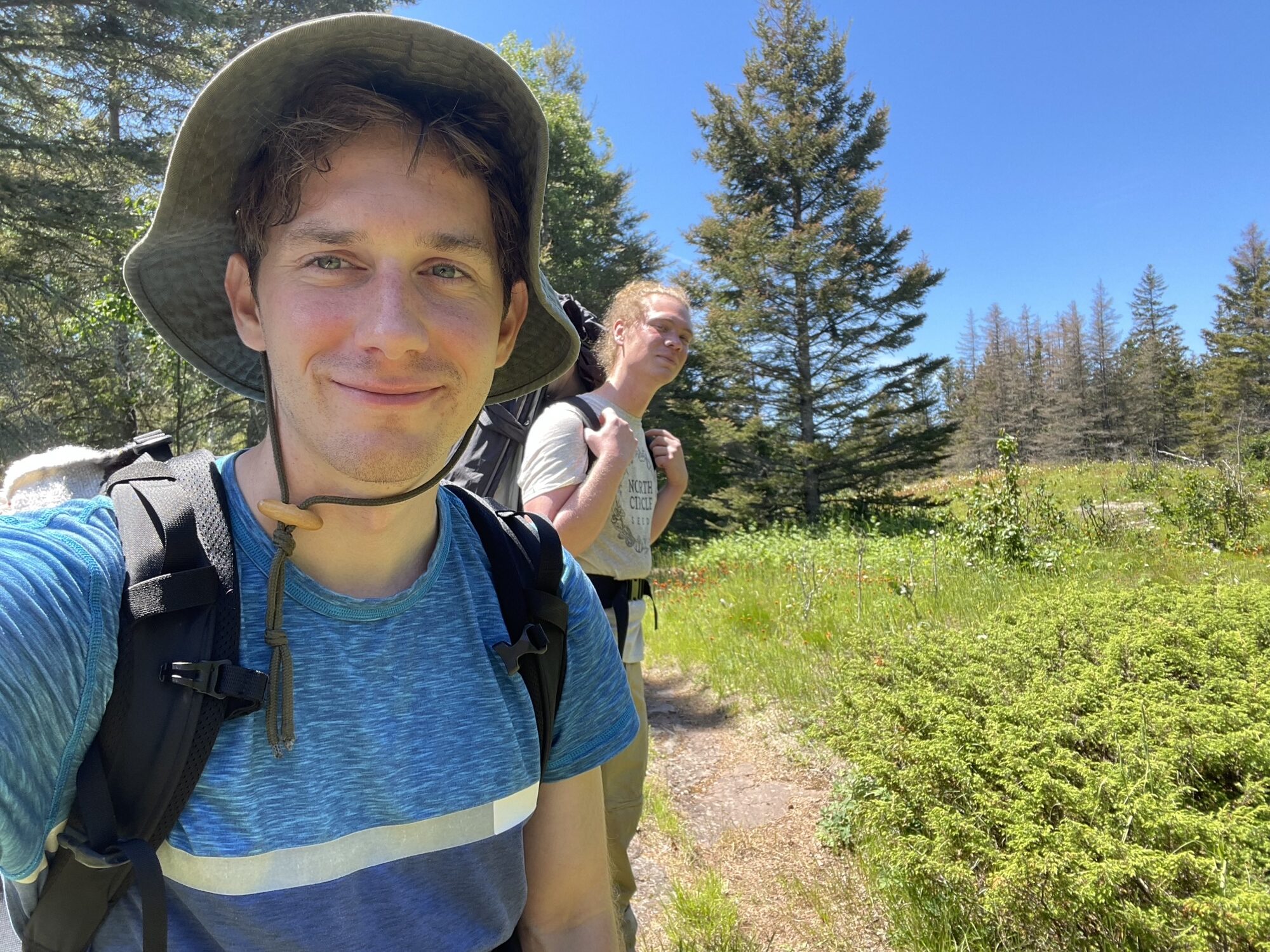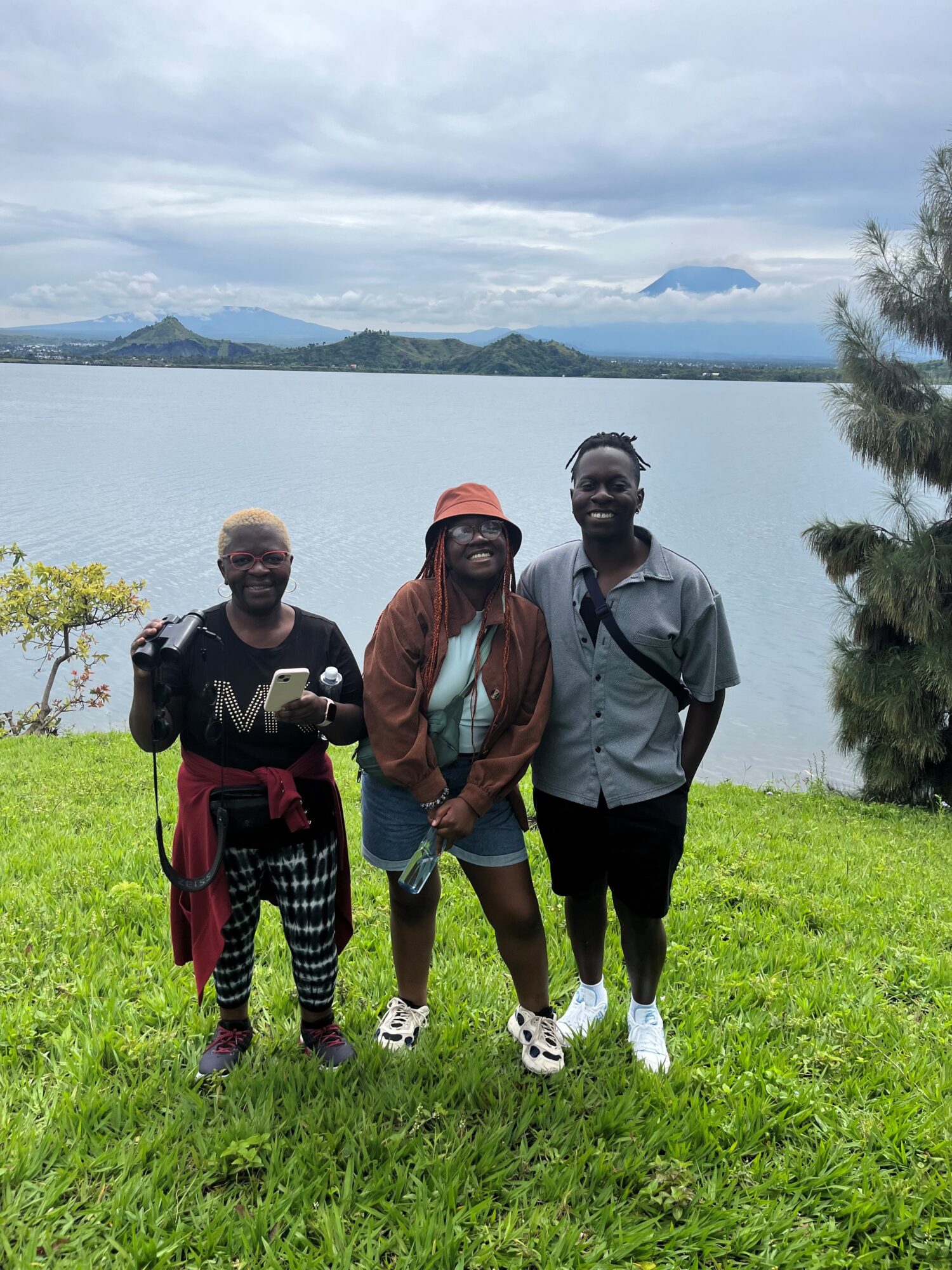
As Fresh Energy continues to advance bold solutions for a clean energy future in Minnesota, we’re excited to welcome two passionate and driven individuals to our team: Nick Haeg, senior policy associate, electric vehicles, and Linda Lubi, a Krusell Fellow through the Center for Urban and Rural Affairs (CURA) and the Humphrey School of Public Affairs. Both Nick and Linda bring unique perspectives and valuable expertise to their roles, and they’re eager to contribute to our mission of equitable decarbonization.
Get to know more about Nick and Linda below and learn about the work they’ll be doing to support Minnesota’s clean energy transformation.
Meet Nick Haeg, senior policy associate, electric vehicles
We’re thrilled to introduce Nick Haeg, who recently joined Fresh Energy on the transportation team, focusing on electric vehicles (EVs). Nick brings a wealth of experience and a passion for climate policy, and he’s excited to advocate for a cleaner future back in his home state of Minnesota.
I sat down with Nick to learn more about his background, career journey, and his vision for advancing a decarbonized transportation future here in Minnesota.
Welcome Nick! Tell me about where you grew up and how it contributed to your work in climate.
Thanks for having me! I grew up in Central Minnesota outside Sauk Centre, a small town of about 4,000 people on the edge of the prairie and the northwoods. Growing up, I was fortunate to spend time on my grandparents’ hobby farm, which taught me a lot about working with the land in a sustainable way and incorporating those values into the community. I’ve always been interested in the environment – like many kids, I loved animals. But in high school, I became more aware of climate change and got involved in activities like the Envirothon and Science Bowl, which sparked my passion for environmental issues.
And I know that background led you to working in climate more broadly. Tell me about your professional background and how it led you to Fresh Energy?

After studying Economics, German and Global Development at Grinnell College in Iowa, I moved to Washington, D.C. where I worked for the Treasury Department’s Office of International Development Policy. There, I focused on climate mitigation issues, including financing for electric mobility infrastructure, which deepened my passion for climate policy. But I missed being in the Midwest. After a few years in D.C., I moved to Chicago to work for a renewable energy company and pursue a public policy degree at the University of Chicago. When I saw the opportunity at Fresh Energy, it felt like the perfect fit — advocating for climate policy and sustainability back home in Minnesota.
Fresh Energy’s work aligns perfectly with my interests in climate policy and transportation, and I’m thrilled to contribute to shaping Minnesota’s future. I’ve been living outside the state for eight years, but I’ve followed Minnesota’s environmental policies and programs closely. In my time away I’ve been preaching about how great Minnesota is to my friends, so I’m excited at the chance to return and work on the issues I care about in the state I call home.
What is the most common misconception you hear about EVs? And what’s your take on EV adoption in the Midwest?
One misconception that’s surprised me is people wondering how we’ll pay for road maintenance after switching to EVs. Right now, road maintenance funds are raised by the gas tax in Minnesota, but as more folks switch to EVs, we’ll find an alternative revenue source to maintain our roads. I think that’s a pretty manageable issue.
Another misconception is that EVs aren’t suited for a northern state like Minnesota. EV technology has come a long way: They increasingly have a longer range that works well for rural residents who need to drive further and can withstand our cold winters. Like any vehicle, you need to get the one that best suits your needs: If you drive longer distances often, be sure to get an EV with a larger range.
Ultimately, EVs are healthier for people and better for the environment. And addressing challenges around accessibility, cost, and charging infrastructure are some of the challenges we face in increasing EV adoption. Not everyone has a single-family home where they can easily install a vehicle charger in their garage; from increasing the rural charging network to making more options available for multi-family housing units, there are a lot of solutions we can already begin implementing more effectively to increase adoption.
What are some of your favorite places in Minnesota, and what do you like to do in your free time?
All of central Minnesota is special to me, but I have a particular connection to the arboretum at St. John’s where I went to high school. I also love the Driftless Area in southeastern Minnesota – it’s great for camping and has beautiful bluffs along the Mississippi.

Outside of work, I enjoy camping, board games, cooking, and exploring cities – especially bookstores and coffeeshops. I’m also into birding and reading, so I’d recommend “North on the Wing” by Bruce Beehler, a great book about bird migration and conservation policy in the U.S. I also recently enjoyed “Psalm for the Wild-Built” by Becky Chambers. It’s short and provides an optimistic vision for a future where humanity has overcome many of the environmental challenges we are facing today.
Thanks for sitting down with me, Nick, and we look forward to the great work you’ll be doing on Fresh Energy’s transportation team!
Meet Linda Lubi, a Charles R. Krusell Fellow through CURA and the Humphrey School of Public Affairs
Fresh Energy is also excited to welcome Linda Lubi, a first-year, Master’s of Urban and Regional Planning student at the University of Minnesota, who will be working with Fresh Energy for the year. Linda is passionate about environmental justice and is joining Fresh Energy as a Krusell Fellow, a fellowship dedicated to increasing the number of highly-trained community development professionals from historically underrepresented communities.
Welcome, Linda! Could you tell me more about how you first became interested in environmental justice and climate?
It really started when I was an undergrad studying sociology at the University of Minnesota. I took an environmental sociology course, which inspired me to write my thesis on environmental justice, specifically looking at urban tree canopies in Minneapolis and Saint Paul. I analyzed how historical practices, like racial covenants, affected the distribution of green space, and how socioeconomic status impacted neighborhood development and access to nature. It was an eye-opening experience for me.

I also had the chance to visit the Democratic Republic of Congo, where my parents are from, with my mother and brother. Experiencing the sheer amount of biodiversity there solidified my interest in environmental justice. That trip really helped me decide that I wanted to go back to graduate school and focus on urban planning and environmental policy.
As you were researching different organizations to work with during your fellowship, what interested you about joining Fresh Energy?
I was really eager to get more experience with environmental policy, especially in relation to justice and equity. When I met John Vaughn at Fresh Energy, he shared his vision for the Justice40 project, and it immediately clicked with me. It felt like the perfect fit, and I’m so glad to be a part of a team that prioritizes environmental justice.
What are you most looking forward to during your time with us?
I’m excited about connecting with different groups across Minnesota and learning from people who are working to create better environmental policies. I think it’s crucial to preserve Minnesota’s rich biodiversity – our lakes, rivers, and ecosystems are so important. I’m looking forward to being part of the work to protect these natural resources for future generations.
Thanks for joining me, Linda!
We’re thrilled to have both Nick and Linda on the Fresh Energy team, and we’re excited to see the impact they’ll make as they bring their passion and expertise to our work to swiftly, equitably decarbonize Minnesota by midcentury.
